Advertisement
How 'Eco-Warrior' Alexis Rockman's Trippy Paintings Of Shipwrecks Confront The Climate Crisis
Resume
Shipwrecks have stoked fear in our collective imaginations throughout history. But what can these disasters at sea say about humans' damaging impact on the planet? That's something artist Alexis Rockman confronts in his new series of psychedelic, large-scale paintings on view at the Peabody Essex Museum in Salem.
“Alexis Rockman has been described as an eco-warrior,” curator Trevor Smith explained. “His weapons in that battle are really paintings.”
Smith said the artist is driven to create complicated, even confusing visual narratives about unintended consequences. He helped organize the show, “Alexis Rockman: Shipwrecks,” which was curated by Andrea Grover of Guild Hall in East Hampton, New York.
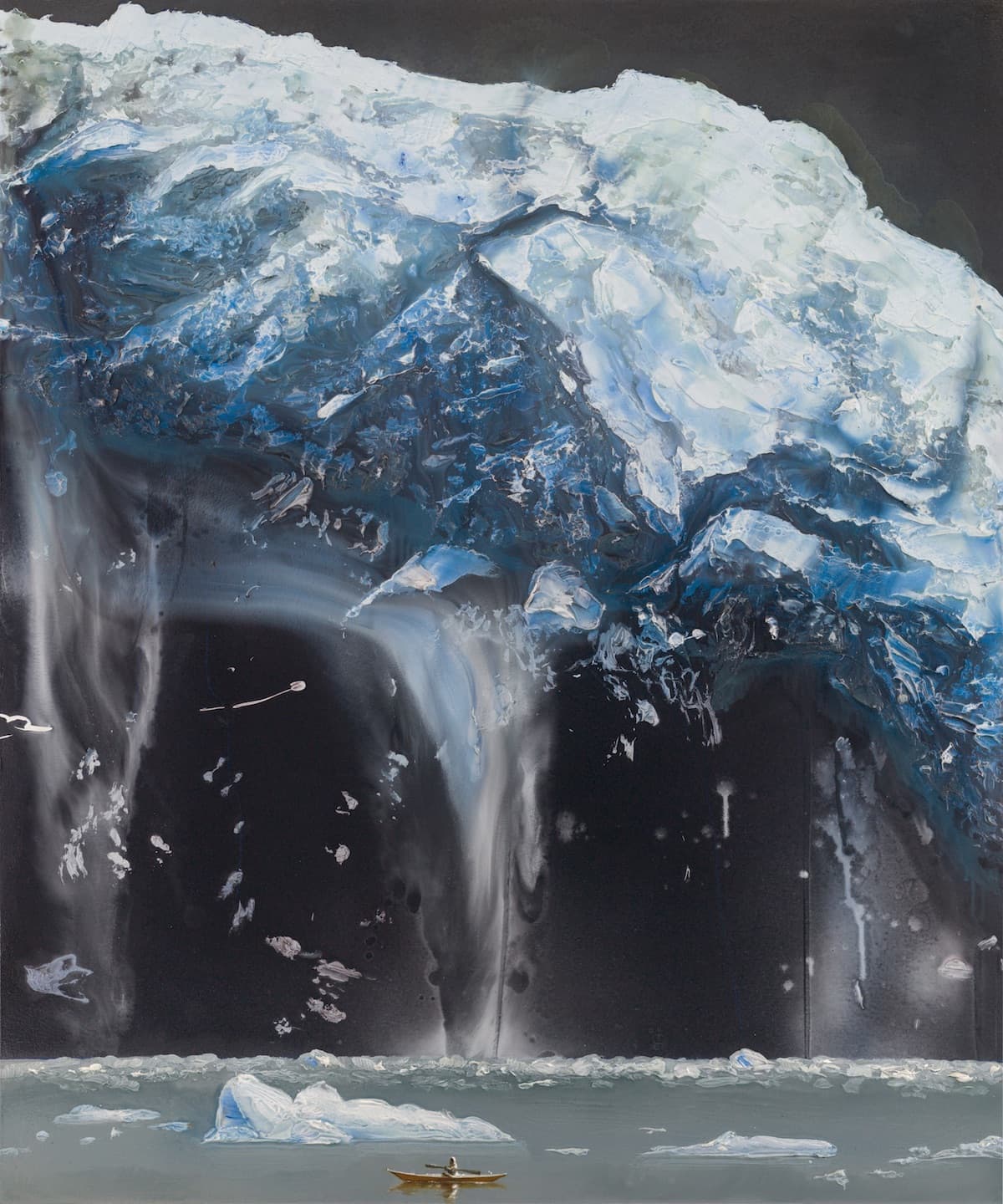
Almost a dozen of Rockman's large-scale interpretations of shipwrecks hang inside the museum's East India Marine Hall. It's a place where 18th-century seafarers proudly displayed the booty they collected on their global excursions. But highlighting tragedies and loss in the historic space is a first.
“Along with the objects from around the world that were collected, there were also images of ports of call, of vessels, of captains – but never of shipwrecks,” Smith said, “because, of course, this is like the unconscious fear, if you will.”
Images of hulking, breached vessels dragging crew and passengers to watery graves are scary. But at first glance, PEM's curator of maritime history and art Dan Finamore said the contemporary artist's trippy works can seem like magical spectacles.
“Each of these paintings, I think it's fair to say, is really visually engaging, brightly colored, fantastic textures – and there's a lot of allure,” he described, “And then when you step in and you look closer, you get kind of a queasy feeling a little bit about what is actually being represented here. It's not such a positive message.”
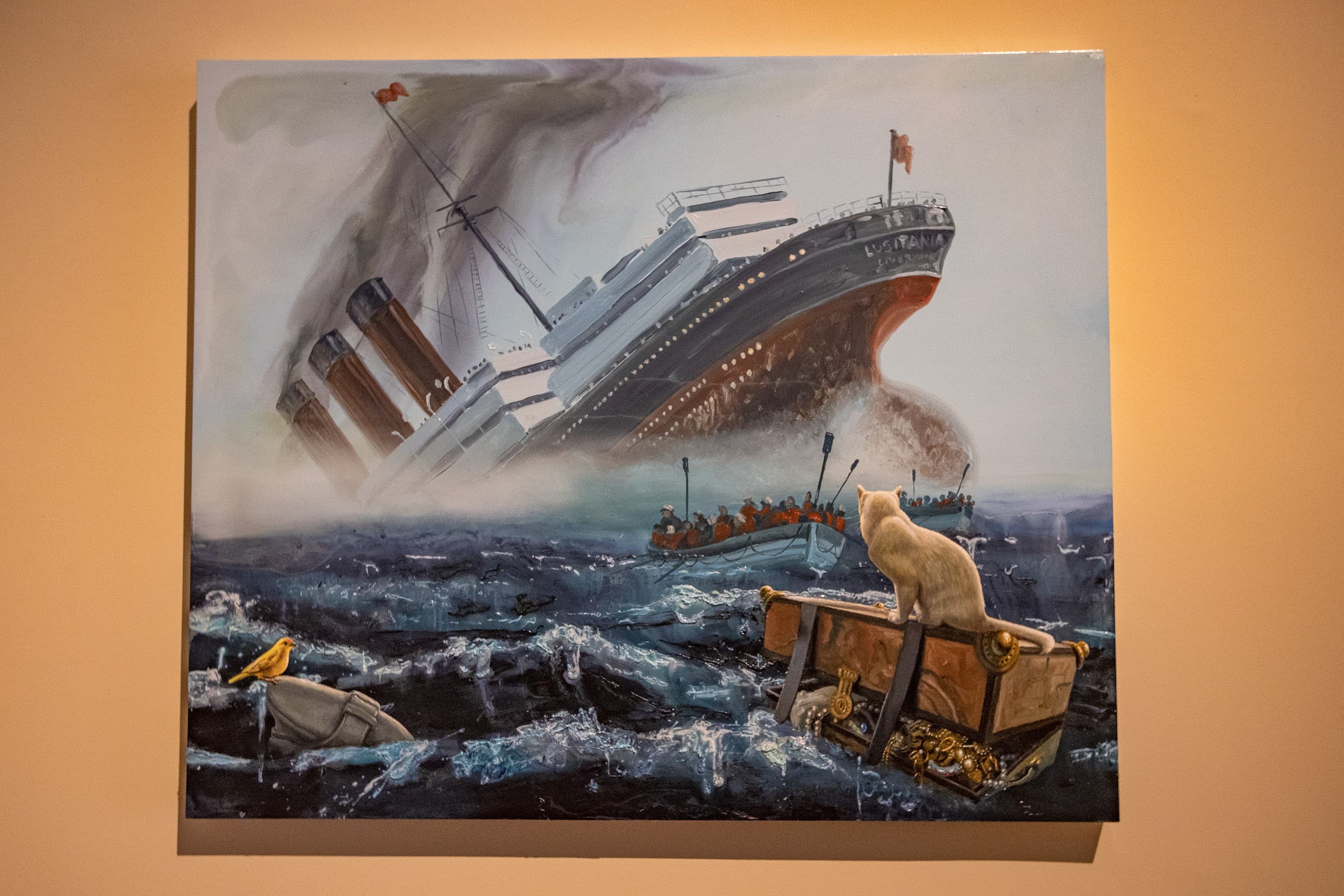
This painting re-examines the annihilation of the Lusitania, one of the largest ocean liners to cross the Atlantic. A German torpedo struck the passenger ship off the Irish coast during World War I.
“The is the ship going down, it's an extremely famous story in my world,” Finamore described, “But what Alexis has done is put the ship in the background. The real story in his mind is happening in the foreground where we're looking at a cat."
The feline could've been a first class passenger's pet. It's perched on a trunk bobbing in the water that's filled with expensive jewels. Plumes of smoke fill the sky over the Lusitania as tiny people in lifeboats scramble to escape. Finamore said animals are often Rockman's main characters. They're the witnesses. The artist isn't interested in re-imagining these histories from a human perspective.
“Here's the cat just sort of watching everything that's happening,” Finamore added, “Of course, the long-term outcome for any of these animals is bad. But they are there at that moment to observe the human disaster.”
We meet a more exotic creature in Rockman's, “The Sinking of the Brig Helen.” A spider monkey in the lower right foreground draws us in. “And then you look at it,” Finamore said before asking, 'Well, why is it on all that garbage?'”

The monkey – now an endangered species because of habitat loss – is floating on a bobbing barrel. It's surrounded by British naturalist Alfred Russel Wallace's entire collection of scientific research.
He gathered his trove which included drawings, indigenous plants and other live specimens over four years in the Amazon. Three vibrant macaws are fleeing the doomed wooden vessel in the background which caught fire on Wallace's trip home to London in 1852.
Wallace co-discovered the theory of natural selection independently of Charles Darwin and presumably would've sold the exotic specimens to museums.
“Each of these collections had a cost in the life of the animal that he was studying,” Finamore continued, “and they were all brought there with the expectation that in some fashion they would enhance human knowledge – and all of that went down with the ship.”
Again, Rockman doesn't detail the humans' plight in the catastrophe. They're undefined blobs of paint tumbling like lemmings off the burning ship's bow. This and the artist's other shipwrecks are metaphors for the degradation of species, the spread of diseases and the environmental destruction wreaked by long-distance trade and travel.
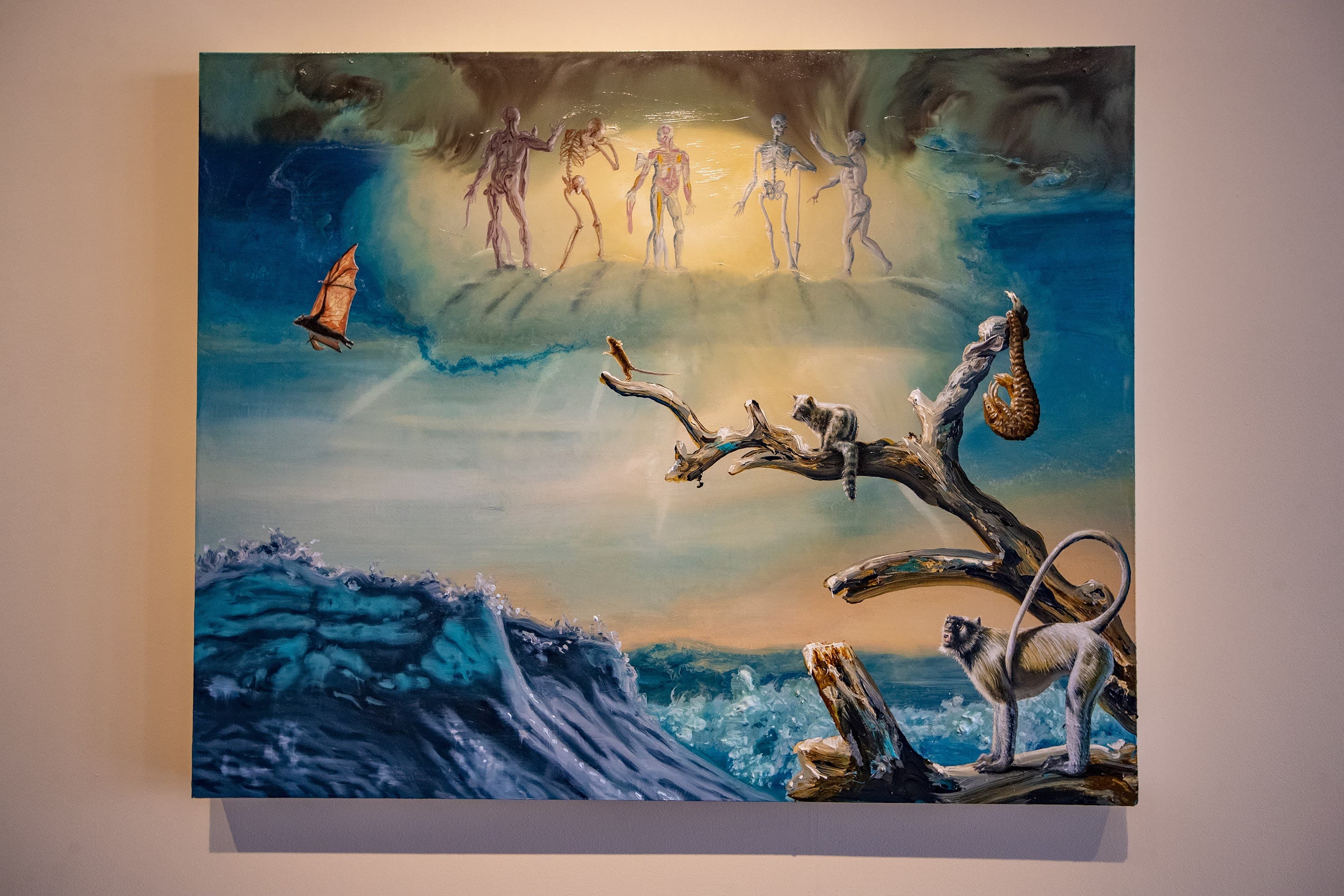
“These paintings aren't necessarily overtly about climate change,” Alexis Rockman explained, “they're about globalism, capitalism, colonialism – those are all part of the same buzz saw that led to climate change.”
Rockman dives down deep rabbit holes of research while conceiving his works, but he made clear he's not an expert in maritime history or art. He uses the shipwreck painting genre – which he acknowledged can sometimes be clichéd and kitschy – for his lens on issues surrounding materialism, human migration, species extinction, bio-diversity and the centuries of baggage they carry.
“I generally am attracted to stories that are not so much about the happy ending, so to speak,” Rockman explained, “and in the case of shipwrecks they're ideal because hopes were dashed, dreams are lost.”
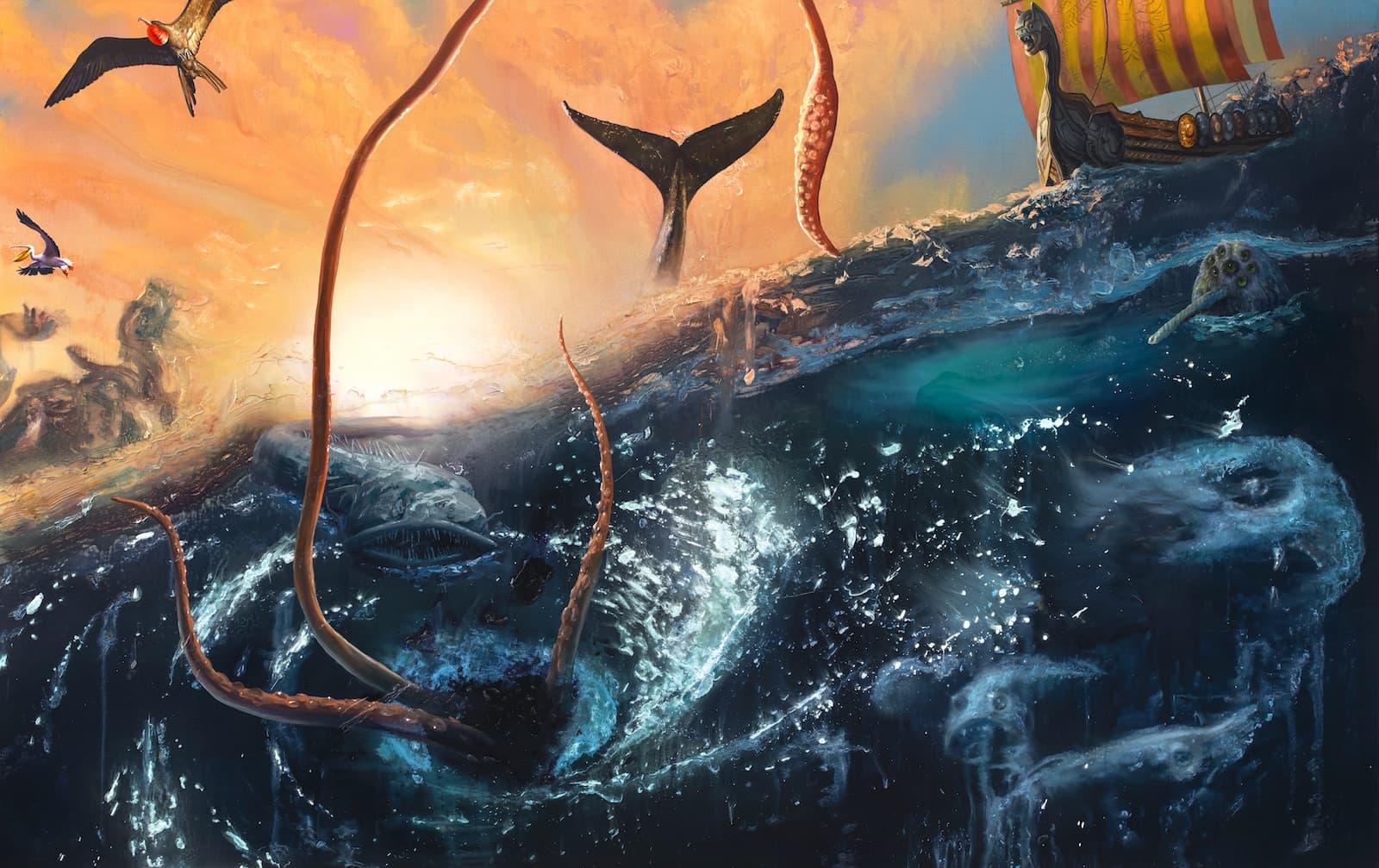
Pop culture also influences Rockman's work. As a kid, he watched TV shows like "Planet of the Apes," Jacques Cousteau and "Mutual of Omaha's Wild Kingdom." Rockman said he basically grew up at the Museum of Natural History in New York where his mother worked. Rockman has traveled to vulnerable places including Tasmania, Madagascar and Antarctica, where he witnessed his only shipwreck from a distance. His watercolor images were the basis for the fantastical imagery seen in director Ang Lee's 2012 film, “The Life of Pi,” that also involved a shipwreck.
Standing in front of Rockman's painting, “The Lifeboat of the EMS Erebus” Dan Finamore pointed to the trio of polar bears drenched in chilly blues and whites. They're the only characters left in the aftermath.
“They're doing the polar bears do,” he described, “one of them is shooting along under the water. Another is curiously poking its head up over the gunnel to see what's inside. Maybe there's some food in there. Maybe they've just eaten the passengers. We don't know.”
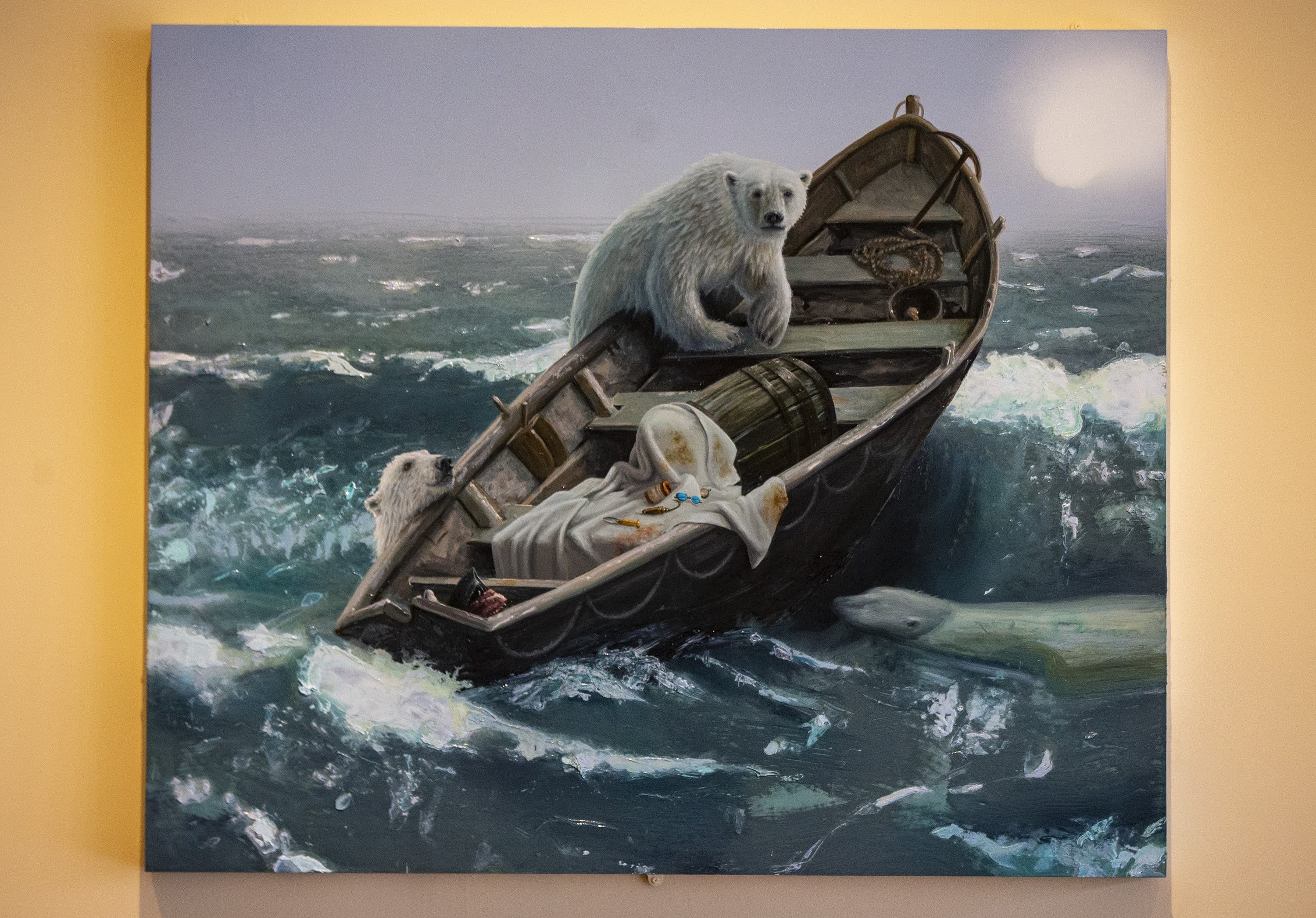
Rockman expanded on his scenario's possibilities.
“Are they taking a little snack off of some cannibalized scraps that happened to be left over? Or are they finished or are they leaving?” he mused, “I don't know. But I want to create a compelling image that asked more questions than it answers.”
The third polar bear is staring right at us. Finamore said this is a traditional art historical technique used to directly engage the viewer.
“What is that polar bear thinking? What is that polar bear thinking of you? What just happened here and what's going to happen next?” he asked, adding, “It's really an incredibly effective method of making us think about this voyage, which was two ships with over 100 men sailing up into the Arctic who disappeared and never left any remnant of where they went.”
Finamore said nature is reclaiming the compromised environment that's not the same Arctic the polar bears knew before the seafarers arrived. And he added Rockman's series of calamity paintings is like a warning shot.
“I think what we're seeing is a representation of the effects of humans going where they really kind of had no business going,” he said, “and what happened to the environment around them because of that.”
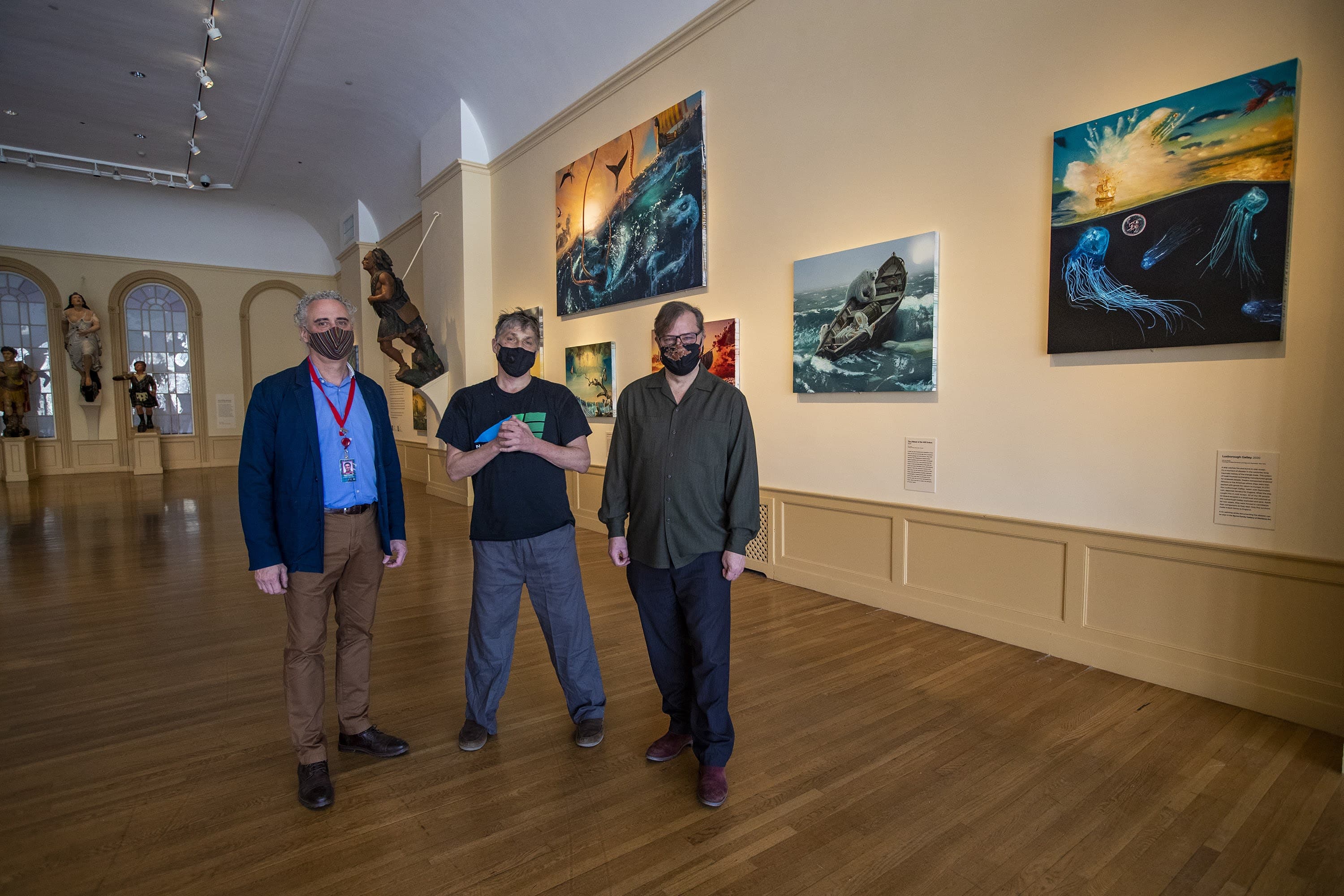
The Peabody Essex Museum is working to create more opportunities for reflection, conversation and action. Rockman's show kicks off a new Climate + Environment Initiative that curator Trevor Smith said will strategically program more exhibitions to address the global crisis by provoking emotions through art.
“When you can create an opportunity for that kind of response, out of those emotions comes a drive perhaps to understand more,” he said, “or to think about what it is that you want to do.”
Rockman wishes people in positions of power would take more responsibility for the state of the planet. Twenty-five years ago he said had high hopes for a wake-up call in the U.S. through education and activism. Not these days.
“I'm really a product of hippie enlightenment,” he said, “and I was naive at how people are capable of really diabolical selfishness. And is that evil? What else is there? If you're someone who's in a position to change policy or you have a corporate platform and you willfully hide data because you care about your bottom line and you don't care about your grandchildren or their grandchildren.”
For Rockman, a reckoning is looming and he's got no problem with being called an “eco-warrior.”
“Take off the f---ing gloves,” he said, with a laugh.
“Alexis Rockman: Shipwrecks” is on view at the Peabody Essex Museum in Salem through May 31
This story is part of Covering Climate Now, a global journalism collaboration of more than 400 news outlets committed to better coverage of the climate crisis. This year's theme is "living through the climate crisis."
This segment aired on April 23, 2021.
